To get these benefits, however, more than casual component matching is required. In one way, this is a huge compliment. The VT80SE is transparent enough to easily let you hear differences in your front-end components, in your interconnects, and of course, in your speakers. Poor choices can make the amplifier sound ordinary, which it most certainly is not.
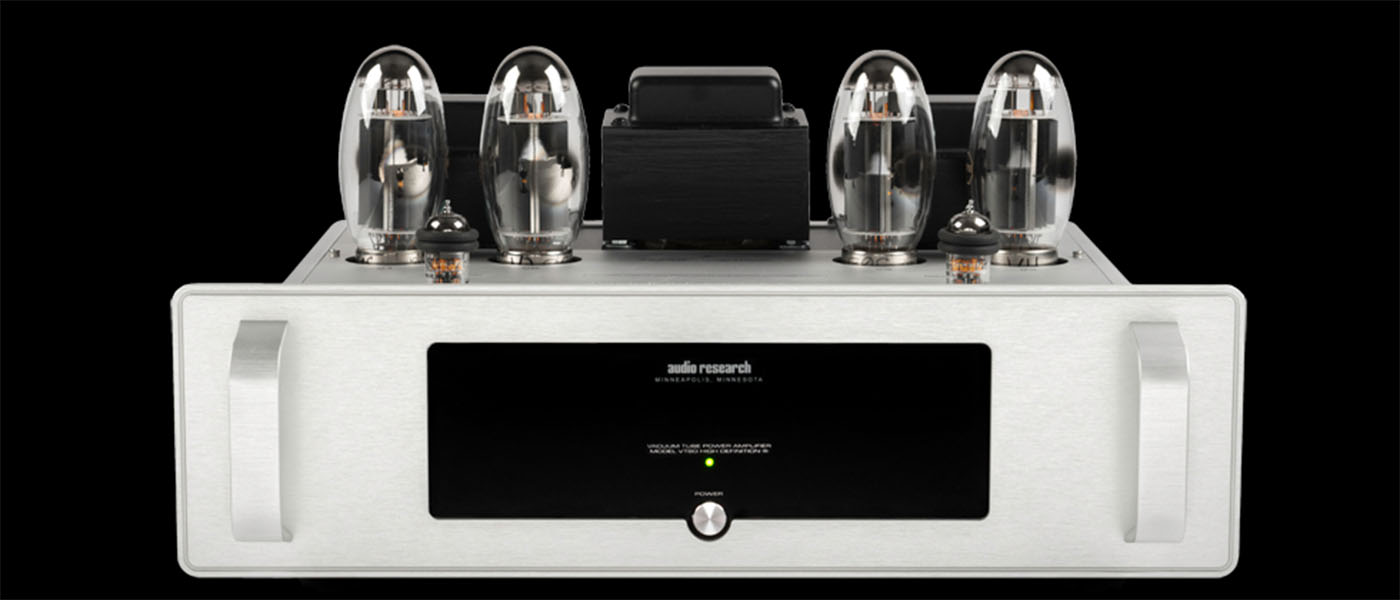
Audio Research VT80SE Tube Power Amplifier
- The Audio Research VT80SE amplifier is not inexpensive
- With careful selection of associated components, it can boost the performance of otherwise “budget” equipment to jaw-dropping levels
- The construction quality is stellar!
- The packaging is robust enough to withstand any shipping abuse
- The appearance is stunning, looking like a far more expensive component
- Technical innovations make this the ideal amplifier for the non-technician
- The VT80SE applies the traditional Audio Research sound using a broad brush
- The KT150 output tubes of the SE edition over the previous VT80 make a huge difference
Over the years, I’ve owned a few Audio Research components including the D40 power amp, and one or two LS preamplifiers, but have only reviewed (not owned) the newest generation of power amplifiers, the VT80 and now this VT80SE. The Audio Research VT80SE power amplifier with KT150 output vacuum tubes does things that my previous Audio Research VT80 did not. Specifically, this amplifier has more soundstage bloom than I’ve previously heard from recent Audio Research components. Some may complain that this makes the amplifier inaccurate, but I’d beg to differ. Hearing an amplifier that can produce both a natural sound and a realistic soundstage is a real treat. The VT80SE accomplishes this.
Power Output:
75 watts per channel continuous from 20Hz to 20kHz.
1kHz total harmonic distortion typically 1% at 75 watts, below 0.05% at 1 watt. (Note that actual power output is dependent upon both line voltage and ‘condition’ i.e.: if power line has high distortion, maximum power will be affected adversely, although from a listening standpoint this is not very critical.)
Power Bandwidth:
(-3dB points) 7Hz to 60kHz.
Frequency Response:
-3dB points at 1 watt) 0.7Hz to 80kHz.
Input Sensitivity:
1.4V RMS BAL for rated output. (25dB Bal gain into 8 ohms.)
Input Impedance:
300K ohms Balanced (150K ohms SE)
Output Polarity:
Non-inverting. Balanced input pin 2+ (IEC-268)
Output Taps:
8 ohms, 4 ohms
Output Regulation:
Approximately 1.0dB 8 OHM load to open circuit
(Damping factor approximately 8)
Overall Negative Feedback:
15dB
Slew Rate:
10 volts/microsecond
Rise Time:
4.0 microseconds
Channel Separation:
112dB
Hum & Noise:
–84dBV weighted, 8 ohms tap
Signal to Noise Ratio:
112dB
Controls:
Power on/off, auto shut-off on/defeat, Input BAL/SE, RS232, 12V trigger
Ambient Air Temperature:
30°C (86°F) maximum ambient air temperature
Power Supply Energy Stg.:
Approximately 350 joules
Power Requirements:
100-125VAC 60Hz (200-250VAC 50Hz) 410 watts at rated output,
500 watts maximum, 230 watts idle. Sleep power < 1 watt
Tubes Required:
2 – Matched pairs KT150 – Power Output; 2 – 6H30 Driver
Dimensions:
width 19” (48.3 cm)
height 10.33” (26.2 cm)
depth 18.45” (46.8 cm) to chassis, 19.40” (49.3 cm) to terminals
Weight:
45.7lbs (20.7kg) Net; 60.5 lbs. (27.4 kg)
Finishes:
Natural (silver) or Black
Vendor:
Audio Research, 6655 Wedgwood Road North, Suite 115, Maple Grove, Minnesota USA 55311
Phone:
763-577-9700
List Price:
$9,500 (more in Europe due to mandatory cage)
Options:
Tube Cage – $475 (silver) to $525 (black)
Company:
SECRETS Tags:
audio research, vt80se, power amplifier, tube amplifier, Amplifier Review 2019
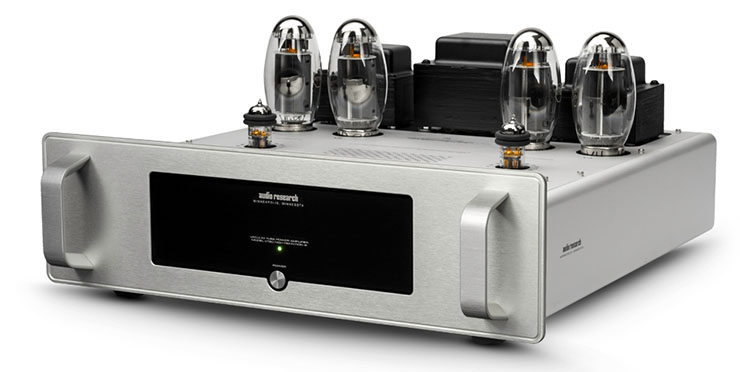
Body of Product Review Article:
Oh, what a difference a tube makes! The original Audio Research VT80 power amplifier was supplied with KT120 output tubes; the new VT80SE runs KT150 outputs. And that, good friend, has made all the difference! The Audio Research VT80SE is what the non-SE version could have been, wanted to be, but just wasn’t quite.
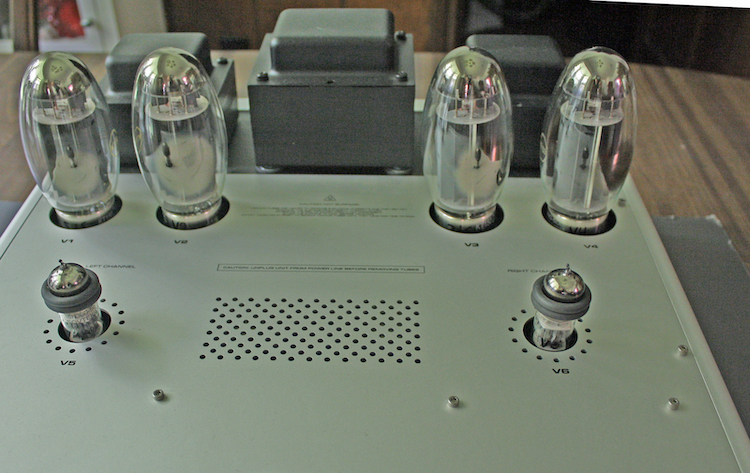
During the review, I had the opportunity to ask a few questions of Audio Research. My questions and their replies are as follows:
- What are the differences between the VT80SE and the original VT80?
- What were the design goals for the VT80SE, and does Audio Research feel that they’ve been fully met?
- Does Audio Research foresee future versions of the VT80 line, and if so, in what directions do you see the model going?
- The VT80SE is one of Audio Research’s “Foundation” components. How much difference exists between the Reference line and the Foundation one?
- In the highly competitive tube amplifier marketplace, what features does Audio Research feel set the VT80SE above the crowd?
- Does Audio Research recommend specific interconnects or speaker wires for the Foundations series? If so, which?
- Does Audio Research consider any other components (preamps, interconnects, speaker wires, etc.) “not recommended” for use with the VT80SE? If so, what and why?
- What speakers did Audio Research use to voice the VT80SE?
- If the budget for VT80SE manufacture had been slightly higher, what single feature would have been included?
- As of now, what are the MSRPs for the VT80SE and the ventilated cover?
The only change was that the height of the VT80SE internal circuit board was lowered slightly to compensate for the KT150 tubes being taller than the KT120 tubes they replaced. The tube bias did not change; all of the output tubes we have used for the last 30 years have been biased at 65mA.
The VT80 was designed to offer very high performance with worry-free operation. The VT80 circuit design was derived from our Reference 75 (an amplifier-of-the-year award winner), so it started with an excellent pedigree. The VT80 was the first Audio Research amplifier incorporating our own auto-bias circuit, designed in-house. The circuit maintains correct bias as the line voltage changes and the tubes age. Also, the output tubes are individually fused to prevent damage if a tube malfunctions: just replace the fuse. We want owners to simply enjoy their music without giving the operation a second thought. We feel these goals were successfully met.
The VT80 is not a line, it is simply a model that is our best non-Reference amplifier. It became an SE when the demand for providing it with the KT150 output could no longer be ignored. It is possible that we will update the VT80SE in the future, but we are very pleased with its performance and there are no plans to change it for the foreseeable future.
The Reference amplifiers offer higher performance that is clearly audible, as they should. They do not sound different, they improve what the VT80SE offers because they have even better parts, larger power supplies, etc.
There are many fine tube amplifiers on the market. We feel the VT80SE provides higher performance, top-to-bottom: better micro- and macro-dynamics, greater clarity, better focus and texture, a more three-dimensional soundstage, and better bass relative to the competition in its price range.
No, the choice of cables is too subjective. We use several different cables at the factory.
No, we try to offer products that are as “universal” as possible. This means, in the case of the VT80SE, that virtually any preamp (or source component with a volume control) can easily drive it. We also design it (and our other amplifiers) to drive an extremely wide variety of speakers: low (below 2 ohms) or high impedance, high or low efficiency, etc. (Everything from horns to Magneplanars to Wilson to Quads.)
At the time, we primarily designed it with Wilson, Sonus Faber, and Magneplanar (20.7) speakers. We also have one person listen to every single new (or service) component in a reference system before we ship it. Currently, we are using the Wilson Alexia Series 2 for that purpose.
We probably would offer it with a power meter.
The VT80SE retails for $9,500 in the US. The ventilated cover retails for $475 in silver, $525 in black. (Very, very few owners in North America want to cover their tubes.)

FEATURES:
The performance and convenience features of the Audio Research VT80SE Tube Power Amplifier are:
A solid-state rectifier: In addition to being more efficient at converting AC to DC current, the solid-state power supply also offers less heat and lower series impedance. The solid-state rectifier won’t age as a rectifier tube would, and is, therefore, much more reliable.
A 30-second, auto-mute cycle at turn-on: This allows the circuitry to stabilize when the VT80SE is powered-up before allowing audio output.
A low-line-voltage sensor: This automatically mutes the amplifier should the house voltage drop below 95VAC.
An auto-bias circuit: As the output tubes’ electrical characteristics change over time, individual tube-bias may drift. This can degrade the sound of the amplifier. Audio Research’s auto-bias automatically monitors the tubes and adjusts the bias of each one to ensure that gain remains constant, and in balance with the other tubes. Most tubes must be manually re-biased on a periodic basis, but the VT80SE does this for you.
Microprocessor control: This switchable feature will automatically shut off the amplifier after a period of two hours. If you forget to turn off the amp, it shuts itself off, saving electricity and extending tube life.
Ventilated chassis: The chassis has ventilation holes around the tubes. This keeps them cooler and lengthens their service life.
12-volt trigger: You can use your preamplifier or processor to turn your VT80SE on and off by way of a trigger wire that controls the power switch.
Robust components: Unlike the majority of consumer audio equipment, the VT80SE sports a full complement of high-quality metal-film resistors and film-dielectric capacitors. The cheaper (and, in my opinion, lower-reliability, wider-tolerance, and worse-sounding) surface-mount components are mostly restricted to microprocessor support and non-signal-path applications.
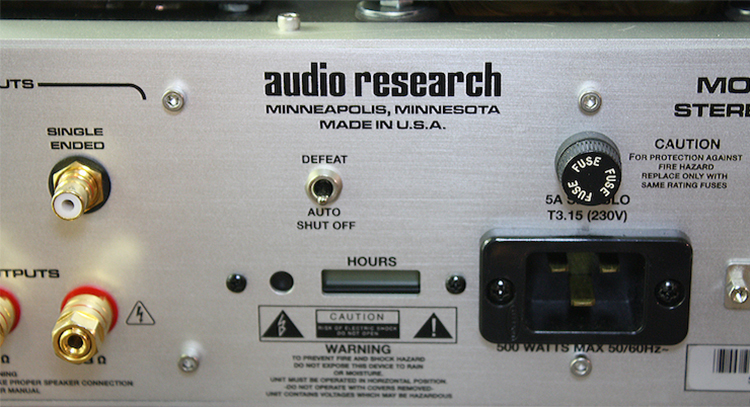
Both unbalanced (RCA) and balanced (XLR) inputs: No matter what the flavor of your upstream equipment, the VT80SE is compatible.
Individual tube fuses: Should something go wrong with the amplifier (like you spill a beverage into the chassis through the ventilation holes, for example) or one tube spontaneously arcs, each output tube has its own individual fuse. This means that if one fails, the resulting voltages won’t damage any of the other tubes.
An “HOURS” display on the rear panel: This shows you how long your tubes have been in service, and answers the question, “Is it time to replace my tubes?”
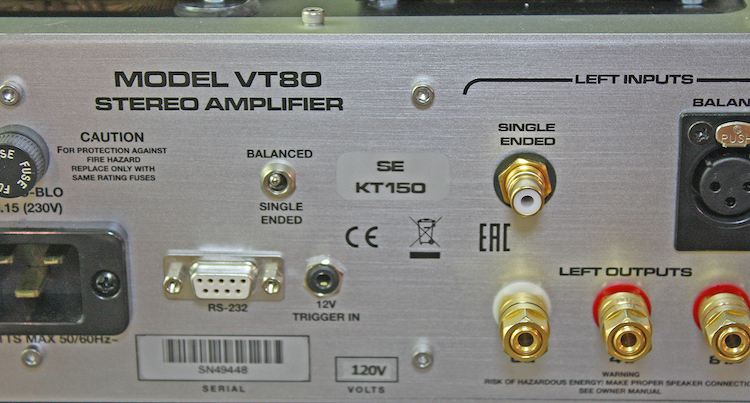
Crestron compatibility: Some potential buyers use whole-house automation systems like Crestron. On the VT80SE, there is an RS-232 port on the back that is compatible with such equipment.
20-Ampere AC input: Should your house have a more robust 20-ampere electrical circuit, the VT80SE can use it (provided you buy a 20-amp electrical cord). The stock cord provided with the amp has a 15-amp grounded plug and a 20-amp socket at the amplifier input for maximum compatibility.
Design Differences:
Differences between the previous VT80 and this new “special edition” VT80SE are minimal. The printed circuit board has been lowered in the chassis to provide clearance for the taller KT150 output tubes below the tube cage, and that’s about it. The only substantial difference consists of absolutely nothing but the KT150 tube set. I didn’t think that simply changing output tubes could have such a big effect on the sound, but the bigger KT150s definitely open the soundstage up.
Unboxing and Setup:
The unboxing and setup of the VT80SE are so simple that a four-year-old could do it, except for the part where you pick it up, it weighs almost 46 pounds. The tubes are numbered to match their sockets, and since the tubes only go into the sockets one way, you can’t plug them in wrong. Further, the tubes are individually packed to avoid shipping damage, and the driver tubes come with vibration damper rings already installed.
Associated equipment used for this review:
- OPPO UDP-205 disc player, sometimes used as a streamer and DAC
- Audio Research DAC9 vacuum tube DAC
- Audio-GD HE-1 preamplifier
- JL Audio CR-2 electronic crossover
- Emotiva PA-1 solid-state mono-block amplifiers
- Klipsch RP600M bookshelf loudspeakers with stands
- Emotiva T2 tower loudspeakers
- JBL L100 Classic loudspeakers with stands
- 10” Subwoofers by Klipsch, Emotiva, and Velodyne
- Room treatments (absorbers and diffusers) by ATC Acoustics
With my Klipsch RP-600m bookshelf speakers –

Discs included:
- JS Bach Sonatas by the Boston Museum Trio (Centaur 2198)
- Muzio Clementi: Sonata in F Sharp Minor, Op. 25, No. 5 / Karol Szymanowski: Four Mazurkas, Op. 50 (Nos. 1-4), and Franz Schubert: Sonata in A Minor D. 959 by Gregory Sioles, piano (Centaur 2533)
- La belle violée – 17th Century French Lute Music by Jacques Gallot and others by Catherine Liddell, lute (Centaur 2359)
With the Klipsch-VT80SE combination, this amplifier reached the pinnacle of its performance in my living room. Relieved of the task of controlling the bass from 100Hz and lower, and removed from the challenge of providing large amounts of current to the speakers, the soundstage absolutely bloomed. Since the RP600m speakers are eight-ohm loads, the 8-ohm transformer taps of the VT80SE could be used. I liked the sound best from these taps. With this combination, I listened to a wide selection of most-excellently recorded music on the Centaur label (one of my favorites).
The thing that impressed me the most using this combination was the holographic soundstage. The performers sounded like they were truly in front of me, but my room had been transformed to a soundscape that must have been original to the recording. This Audio Research VT80SE plus Klipsch RP600M combo provided some of the best sound I’ve heard in my living room. The subwoofers handled the bass, of course, but the remainder of the frequency range (from 100Hz on up) was startlingly good.
With my Emotiva T2 tower speakers –

Discs included:
- Stravinsky – The Firebird Suite (1919 version), Borodin – Overture and Polovetsian Dances from Prince Igor by Robert Shaw and the Atlanta Symphony Orchestra and Chorus (Telarc CD-80039)
- The Who – Thirty Years of Maximum R&B (4-disc box set) – (MCA MCAD4-11020)
- Hank Williams, Jr. – The Bocephus Box Set – 1979-1999 (3-disc box set) – (Curb Records D2-77940)
The VT80SE had to provide full-range power and control into the Emotiva’s four-ohm load. Although the dual eight-inch ported drivers per speaker are relatively sensitive and don’t require much power to play loudly, their four-ohm impedance can challenge some amplifiers. With very little power needed from the VT80SE, the Emotiva speakers sounded more than loud enough and demonstrated a relatively wide and deep soundstage. The soundstage performance from the 4-ohm taps of the VT80SE was almost as good as the performance with the 8-ohm Klipsch speakers with subwoofers – so much so that I had to switch back and forth several times to establish a preference.
The bass response of the Emotiva T2 speakers and the Audio Research VT80SE was slightly on the light side, but this could be compensated for by speaker placement. If I moved the Emotiva towers back against the wall behind them, I could get enough bass response, but at the cost of some imaging. Often, speaker placement ends up being a compromise between bass and imaging, which is why I’ve always been skeptical of speakers with built-in subwoofers. But I digress – the Emotiva T2s did a more than adequate job of letting the VT80SE bloom.
With my review pair of the JBL L100 Classic speakers –

Discs included:
- Dukas – The Sorcerer’s Apprentice, Symphony in C, La Péri by Jesús López-Cobos and the Cincinnati Symphony Orchestra (Telarc CD/DSD CD-80515)
- Reiner conducts Tchaikovsky – Symphony No. 6, Op. 71 “Pathétique,” 1812 Overture / Franz Liszt – Mephisto Waltz – Chicago Symphony (RCA Victor “Living Stereo” 09026-61246-2)
- Itzhak Perlman – Great Romantic Concertos (Beethoven, Brahms, Bruch, Mendelssohn, Paganini, Tchaikovsky) – (EMI Classics – CDMC-7649222)
The VT80SE was tasked with controlling the 4-ohm, 12”-diameter ported woofer. Though the amplifier exhibited very good control and articulation with these larger drivers, the bass occasionally sounded more reserved in amplitude than with the other speaker combinations. The effect could be mostly eliminated through a judicious selection of room placement and midrange/treble adjustment, so I wouldn’t place too much blame on the Audio Research VT80SE amplifier. Nevertheless, the JBLs generally did better in the bass with the solid-state Emotiva PA-1 power amplifiers.
The JBL speakers, unlike the others used for this review, provide midrange and treble adjustment pots on the baffle board. This allows adjustment in the environment where the speaker is being used. In my room, and with the VT80SE, I got the best results with both the mid and treble pots slightly counterclockwise from their reference marks. To my ears, this provided the best and flattest sounding frequency response. The JBLs were also used on stands (unlike the Emotiva towers) that might have affected the bass response.
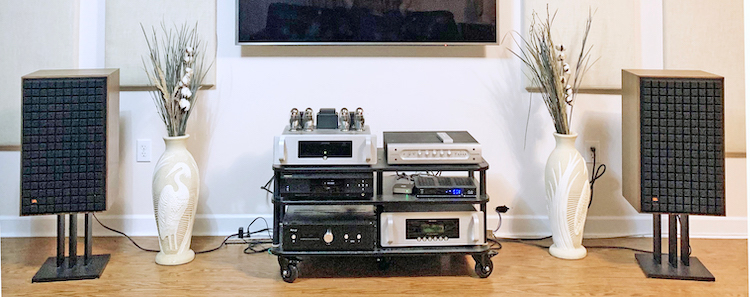
The AUDIO RESEARCH VT80SE TUBE POWER AMPLIFIER justifies its existence and $9500 cost with some clever tube rolling. The KT150s deliver a significant sonic improvement. Highly recommended!
- Amazing soundstage – the best I’ve heard from any Audio Research product yet
- Looks – The VT80SE can easily be mistaken for a far more expensive component
- Technology – Individually-fused tubes with auto-bias mean an end to tube matching
- Quality – I’ve not seen any amplifier with higher quality construction
- Warranty – When buying a product in this price range, the customer wants to be confident that the manufacturer will be around should the warranty be needed. Audio Research has passed the test of time.
- Lack of flash – Unlike some tube brands that use colored LEDs to illuminate their tubes, the Audio Research VT80SE is the Sergeant Joe Friday of tube amps – “Just the facts, ma’am.”
- A touch more punch in the bass region
- A mono-block version of the amplifier
If you’re an Audio Research fan, and if you’re in the market for a tubed power amplifier, do yourself the favor of auditioning the VT80SE. In my opinion, its durability, performance, and resale value all contribute to its excellence.
As always, prior to purchasing a component of this price, be sure to audition the VT80SE amplifier with your speakers, and preferably in the room where you’ll be using the equipment. Both speakers and room make a bigger sonic difference than the amplifier itself, but if you’re satisfied with your sound as it is, then the Audio Research VT80SE may well take your system to the next level.
I’ve always been skeptical whether tube rolling could make enough difference in audio gear to justify the cost. The Audio Research VT80SE has been the component to change that opinion. The original VT80 sounded quite good with its KT120 output tubes, but the KT150 tubes in this Special Edition version of the amplifier are, in my opinion, a HUGE step up in sound quality and more than justify the additional cost of the KT150 tube set. The KT150s provide dynamics and sound-staging that I just didn’t hear with the KT120s. The KT120s, on the other hand, seemed to have slightly stronger bass. The choice, for me, is simple – dynamics and sound-stage win every time! Want more bass? Get a subwoofer!


